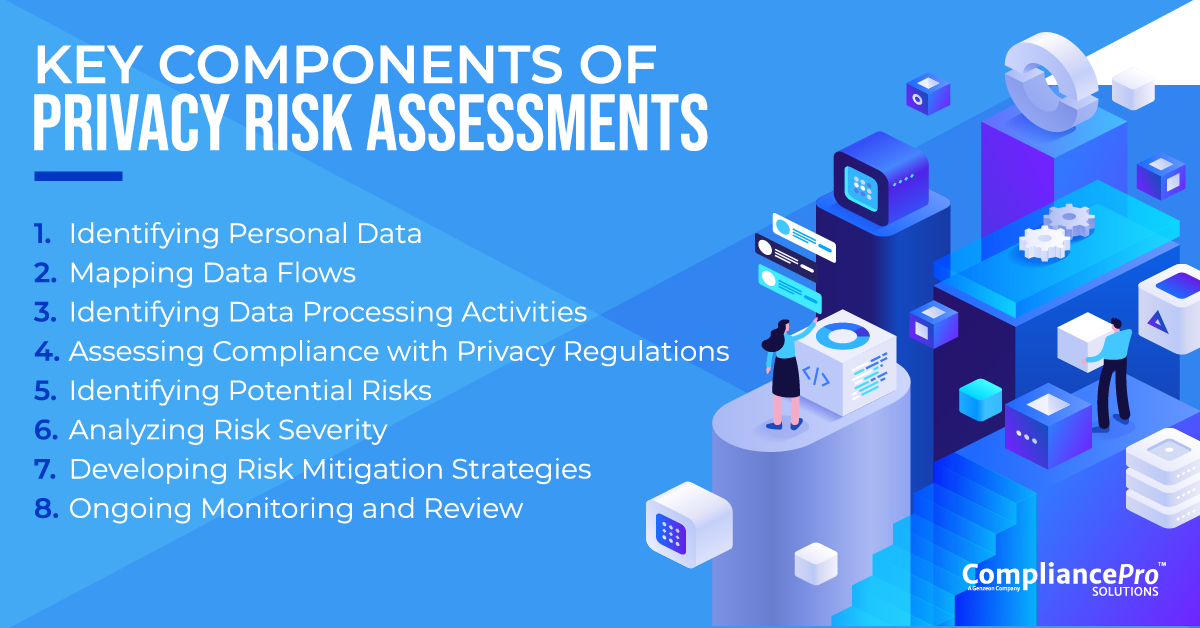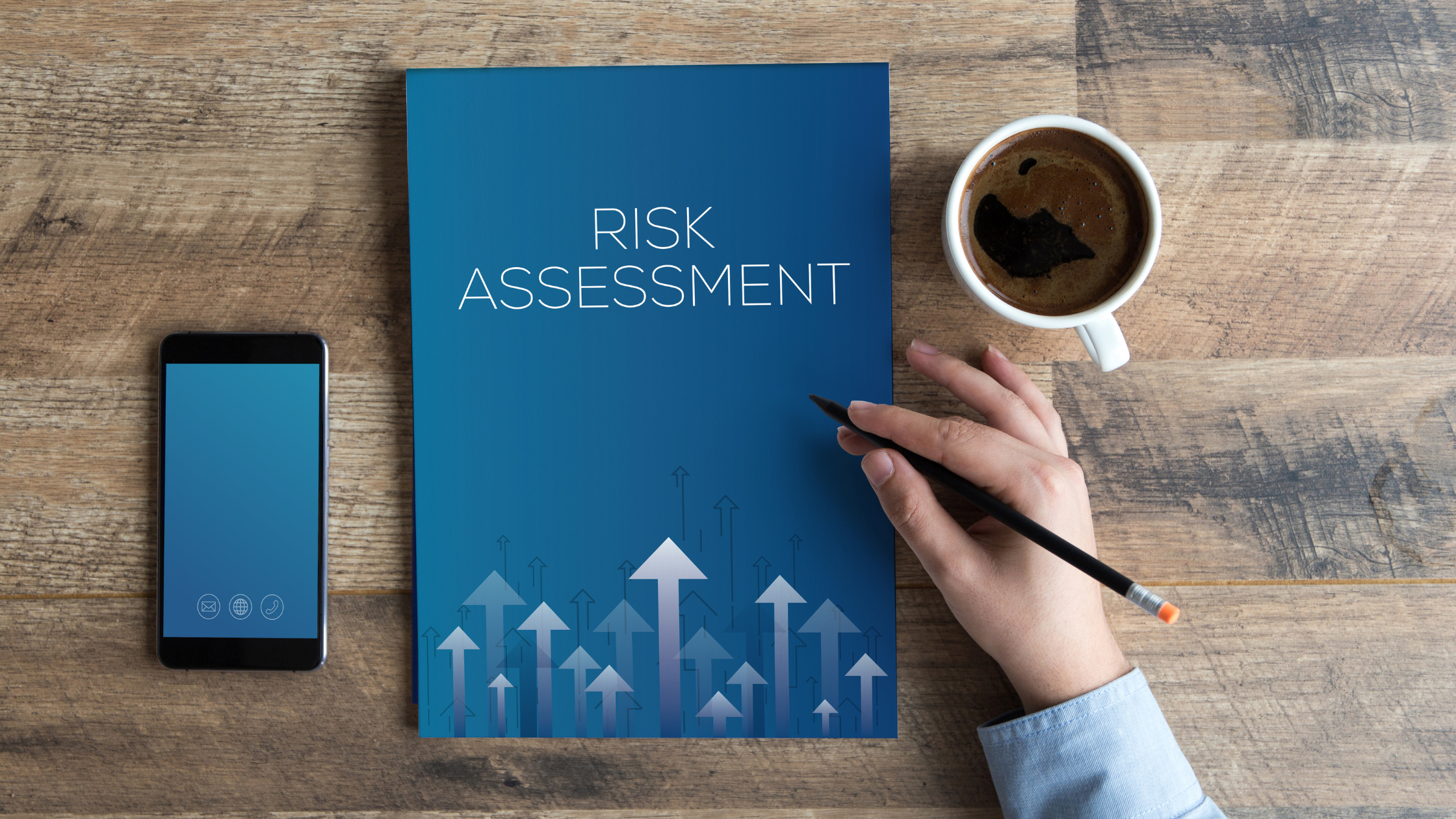A fundamental part of every organization’s risk management and compliance program is to proactively evaluate your organization against a set of criteria to identify risks and areas of non-compliance before issues arise. This is certainly true for HIPAA compliance but also applies to other areas involving privacy, security, and business risk. With the increasing occurrence of data breaches and privacy concerns, organizations must take proactive steps to assess and mitigate privacy risks.
While a privacy risk assessment could include assessing risks to both person and business information, this blog aims to provide insights into privacy risk assessment for an organization’s personal information. We will focus on understanding the assessment’s components, stages, challenges, and the importance of effective privacy risk assessments.
Understanding Privacy Risk Assessment
A privacy risk assessment is the systematic process of identifying, analyzing, and mitigating potential risks to the confidentiality, integrity, and availability of personal information. It involves assessing the likelihood and impact of various threats and vulnerabilities to sensitive data, thereby enabling organizations to implement appropriate controls and safeguards.
94% of organizations say consumers won’t buy from them if personal data is not properly protected.
- Cisco 2024 Data Privacy Benchmark Study
Key Components of Privacy Risk Assessment

- Identifying Personal Data: This involves gaining a comprehensive understanding of the types of personal data collected, processed, or stored by an organization. Personal data is information such as names, addresses, email addresses, contact numbers, social security numbers, financial data, etc.
- Mapping Data Flows: It is important to identify how personal data flows within and external to the organization, including its collection, storage, transfer, and disposal. Mapping data flows helps identify vulnerabilities or potential risks at each stage.
- Identifying Data Processing Activities: A privacy risk assessment entails identifying the various activities involved in processing personal data, such as data collection, usage, retention, sharing, and destruction. This assists in determining potential risks associated with each activity.
- Assessing Compliance with Privacy Regulations: The assessment should confirm that the organization is compliant with relevant privacy laws and regulations, such as the General Data Protection Regulation (GDPR), California Consumer Privacy Act (CCPA), HIPAA, etc. It involves reviewing the organization's policies, procedures, and practices against the requirements of these laws, regulations, guidance, and best practices.
Almost 93% of organizations indicated privacy is a top-10 organizational risk, and 36% ranked it within the top five.
- IAPP Privacy Risk Study 2023
- Identifying Potential Risks: This step entails discovering potential risks or threats to the personal data held by the organization. Examples of risks could include unauthorized access or disclosure, data breaches, inadequate security measures, third-party vulnerabilities, etc.
- Analyzing Risk Severity: The severity of identified risks is assessed based on factors such as the potential impact on individuals' privacy rights, the likelihood of occurrence, and the organization's ability to mitigate the risk.
- Developing Risk Mitigation Strategies: Once risks are identified and their severity assessed, appropriate strategies and controls should be put in place to mitigate these risks. This may involve implementing technical and organizational measures like encryption, access controls, staff training, privacy policies, and incident response plans.
- Ongoing Monitoring and Review: Privacy risk assessment is not a one-time activity. It should be an ongoing process that involves regular monitoring, review, and updating of privacy risk management strategies. This process should uncover any changes in data processing activities or emerging risks so that they are identified and addressed promptly.
It is important to note that the specific components may vary based on the organization's industry, size, and applicable privacy regulations. Conducting regular privacy risk assessments is essential to maintain compliance, protect personal data, and preserve trust with individuals and stakeholders.
Only 50% of organizations have an established privacy risk appetite.
- IAPP Privacy Risk Study 2023
Stages of Privacy Risk Assessments

- Scoping: This stage involves defining the scope and objectives of privacy risk assessment. It includes identifying the systems, processes, and assets that handle personal information and determines the scope of the assessment.
- Data Collection: In this stage, relevant information is gathered to assess privacy risks. This may include an inventory of personal data, interviews with key personnel, a review of policies and procedures, and analysis of data flows.
- Risk Identification: Privacy risks are identified by evaluating the collected data and conducting a comprehensive analysis based on the applicable regulatory requirements. This stage identifies potential vulnerabilities, threats, and consequences of mishandling personal information.
- Risk Assessment: The identified risks are assessed by considering the likelihood and impact of each risk. Scores are based on the likelihood of an incident occurring and the potential impact on individuals and the organization.
- Risk Mitigation: Once risks are assessed, appropriate measures are determined to mitigate these risks based on a risk ranking. This may include implementing controls, establishing policies and procedures, providing training and awareness programs, and adopting privacy-enhancing technologies.
- Monitoring and Review: Continuous monitoring and reviewing of privacy risks and mitigation efforts are essential. This stage involves regular assessments to determine if implemented controls are effective, to identify emerging risks, and to determine if updating privacy management practices is necessary.
- Documentation and Reporting: Lastly, it is important to document the privacy risk assessment process, findings, and actions taken. This documentation maintains a record of the assessment and reporting to relevant stakeholders, regulatory bodies, or auditors.
By following these stages, organizations can identify and address privacy risks to protect personal information effectively.
64% of organizations have a privacy risk management program that is fully integrated into their overall enterprise risk management program.
READ KNOWTION HEALTH CASE STUDY
Conclusion
In today's digital landscape, privacy risk assessment is not just a best practice; it's a necessity. Effective privacy program management is essential for organizations to protect personal data, comply with privacy regulations, and maintain trust with individuals.
At CompliancePro Solutions, we recognize the importance of privacy risk assessment in safeguarding information. Our comprehensive suite of privacy risk assessment solutions and templates empowers organizations to identify, analyze, and mitigate privacy risks effectively.
With our expertise and SaaS application, we help our customers navigate the complex landscape of privacy compliance and data protection, ensuring that their sensitive information remains secure.
If you have any questions or want to learn more about our privacy solutions, please visit https://www.complianceprosolutions.com/
If you have found this blog post informative, we encourage you to share it with your social network.


